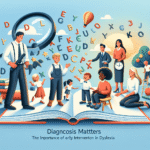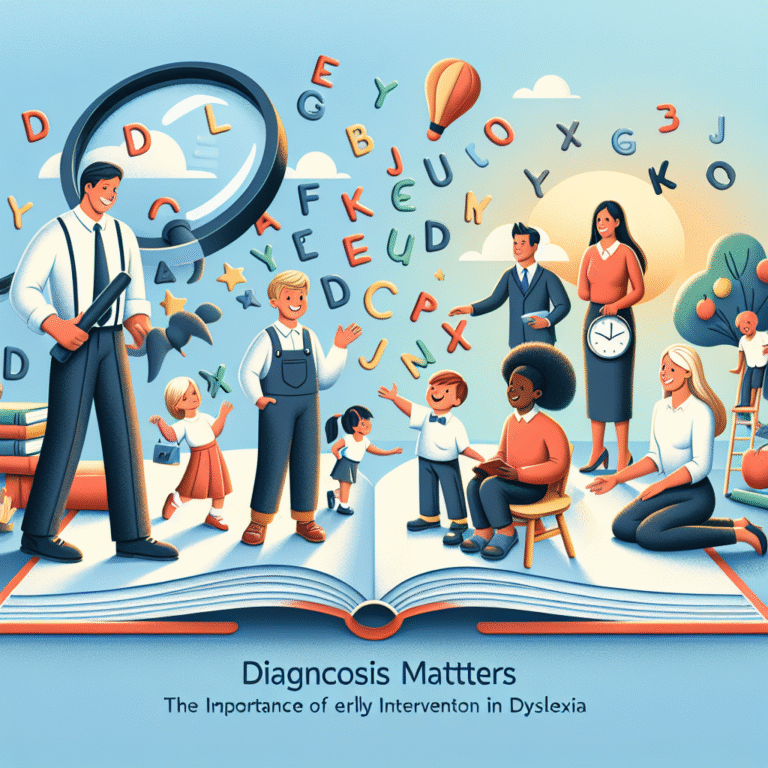
psyforu
The Power of Early Intervention: Boosting Language Development in Children with Learning Disabilities
Introduction
In a world where communication is the cornerstone of social interaction, the ability to express oneself effectively opens doors to myriad opportunities. For children with learning disabilities, however, this fundamental skill can be a daunting challenge. The critical role of language development can’t be overstated; it lays the groundwork for academic success, self-esteem, and lifelong connections. “The Power of Early Intervention: Boosting Language Development in Children with Learning Disabilities” not only emphasizes the urgency of early action but also underscores the potential for transformative outcomes when the right tools and support systems are implemented early on.
The importance of this intervention strategy cannot be overstated: research consistently shows that children who receive early support for their language development are more likely to thrive academically and socially. In this article, we will delve into the key elements of effective early intervention, illuminating how a strategic, informed approach can unleash the full potential of children with learning disabilities.
Understanding Learning Disabilities and Language Development
What Are Learning Disabilities?
Learning disabilities encompass a range of difficulties that affect the acquisition of skills in specific areas such as reading, writing, and language. Conditions like dyslexia, dysgraphia, and expressive/receptive language disorders can significantly hinder a child’s ability to communicate and develop language skills.
Language Development Milestones
Language development occurs in phases, each integral to a child’s ability to communicate effectively. From babbling as an infant to complex sentence structure in early school years, understanding these milestones can inform early intervention efforts.
Table 1: Language Development Milestones
| Age | Milestone |
|---|---|
| 6-12 Months | Babbling, recognizing own name, simple gestures |
| 12-18 Months | First words, following simple directions |
| 2-3 Years | Two to three-word phrases, vocabulary explosion |
| 3-4 Years | Longer sentences, understanding of basic concepts |
| 4-5 Years | Grammatical sentences, storytelling abilities |
Recognizing delays in these milestones is vital. This is where “The Power of Early Intervention: Boosting Language Development in Children with Learning Disabilities” becomes essential.
A Closer Look at Early Intervention
What Is Early Intervention?
Early intervention refers to the targeted support and services provided to children with developmental delays or disabilities, often from birth to age three, though the benefits extend well beyond this timeframe. This proactive approach allows families to lay the groundwork for long-term growth.
Why Early Intervention Matters
Timely intervention means addressing challenges before they become ingrained. Research has shown that children who receive early intervention for language-related issues make greater strides than those who start later.
Key Components of Effective Early Intervention
- Individualized Plans: Tailoring strategies to a child’s specific needs is paramount.
- Family Involvement: Engaging family members ensures consistency in support.
- Multi-Disciplinary Approach: Including speech-language pathologists, educators, and psychologists creates a holistic support system.
Case Study: James’ Journey
At age two, James was diagnosed with expressive language disorder. His words were limited, and he struggled to communicate his needs. Through early intervention, including regular sessions with a speech therapist and interactive play sessions, his language skills flourished. Now, at age five, he engages in storytelling and uses complex sentences, highlighting “The Power of Early Intervention: Boosting Language Development in Children with Learning Disabilities.”
Techniques to Boost Language Development
Play-Based Learning Strategies
Engaging children through play creates a fun, low-pressure environment to enhance language skills. Using storytelling toys, puppets, and rich narratives can significantly impact vocabulary and sentence structure.
Structured Play Activities
Activities like role-playing or board games that require verbal communication encourage children to practice language skills in context.
Incorporating Technology
Educational apps and games designed for language development can be valuable tools. They provide interactive platforms where children can practice at their own pace.
Data-Driven Approaches
Using metrics to track progress allows parents and educators to see what interventions are most effective.
Chart 1: Progress Tracking for Language Development
| Interval | Words/Concepts Acquired | Comprehension (Yes/No) | Comments |
|---|---|---|---|
| Month 1 | 10 | No | Initial sessions started |
| Month 3 | 25 | Yes | Vocabulary growing |
| Month 6 | 50 | Yes | Clear sentences emerging |
The Impact of Community Support
The Role of Educators
Teachers are often the first to notice language delays. Training educators to recognize and support language development issues can make a significant difference.
Building a Support Network
Creating community awareness about early interventions and the specific needs of children with learning disabilities can foster an environment of understanding and support.
Case Study: Maria’s Support Network
Maria was diagnosed with a receptive language disorder at three years old. Her preschool initiated an early intervention program involving her family, speech therapists, and teachers. With this comprehensive support system, Maria progressed remarkably, moving from single-word responses to having meaningful conversations within a year. This illustrates once again “The Power of Early Intervention: Boosting Language Development in Children with Learning Disabilities.”
Tips for Parents
Be Your Child’s Advocate
Understanding your child’s rights and the available resources is vital. Don’t hesitate to ask questions or seek additional support, whether through schools or private services.
Monitor Milestones at Home
Regularly check if your child is meeting their milestones. Activities such as reading aloud or encouraging conversation play a pivotal role.
Communication Strategies
Encourage open-ended questions to stimulate conversation. Instead of asking, “Did you like the story?” try, “What was your favorite part of the story?”
Celebrate Small Wins
Recognizing progress, no matter how small, fosters confidence and encourages further development.
Overcoming Common Myths
Myth: “It’s Too Late for Intervention”
Many believe that if a child is older than three, it’s too late for meaningful intervention. However, research and case studies suggest that ongoing support can yield remarkable improvements.
Myth: “Only Speech Therapists Can Help”
While speech therapists are invaluable, a team approach can provide multiple perspectives and strategies for growth.
Myth: “Learning Disabilities Only Affect Academics”
In reality, learning disabilities may lead to social challenges as well. Addressing language deficits early helps with broader community interaction.
Conclusion
The journey of language development in children with learning disabilities is not a straight path; it is filled with nuances, challenges, and opportunities. Early intervention serves as a guiding light, illuminating the way for children to acquire vital language skills and thrive.
In embracing “The Power of Early Intervention: Boosting Language Development in Children with Learning Disabilities,” we recognize that timely action can dramatically improve a child’s future. As we move forward, let us commit to advocating for early intervention strategies, ensuring every child has the opportunity to communicate, connect, and succeed.
FAQs
1. What age is best for starting early intervention?
Early intervention is most effective when initiated as soon as possible, ideally during the first three years of life.
2. How can I tell if my child has a language delay?
Look for significant gaps in language milestones compared to peers. If your child isn’t meeting milestones (like not speaking two-word phrases by age two), consider seeking help.
3. Will intervention be effective if my child is older?
Yes! While early intervention offers the best outcomes, children of all ages can benefit from targeted strategies and support.
4. What kinds of professionals should I seek for support?
Speech therapists, educational psychologists, and special education teachers are often key players in an effective intervention team.
5. How can I support my child’s language development at home?
Engage in activities that promote interaction—reading together, playing games that encourage conversation, and using everyday opportunities to ask open-ended questions.
The sooner we recognize and harness the power of early intervention, the brighter the future for children with learning disabilities will be. Let’s champion their journey toward effective communication together!









